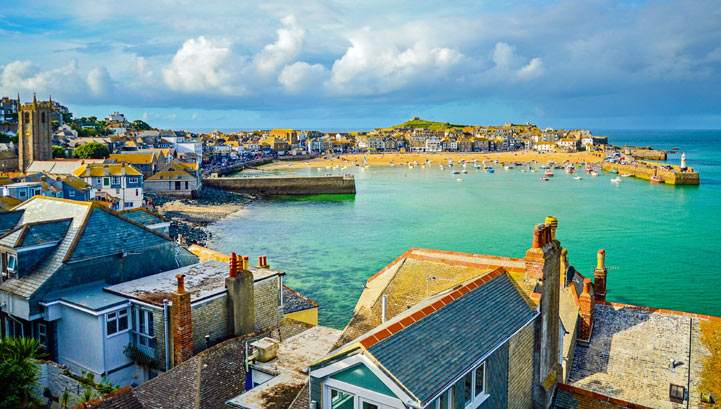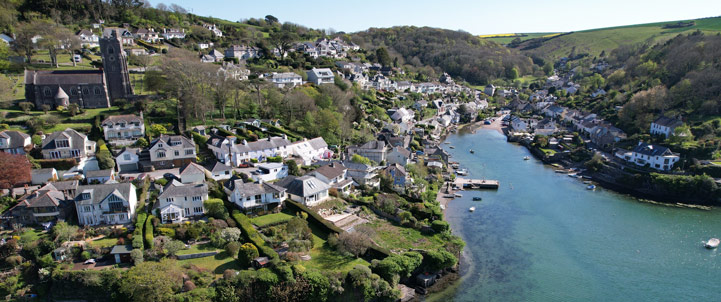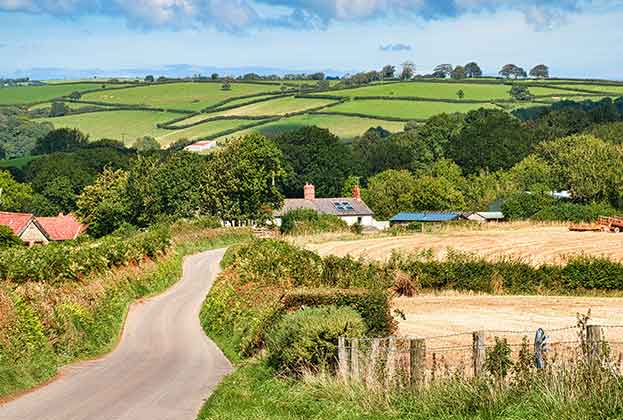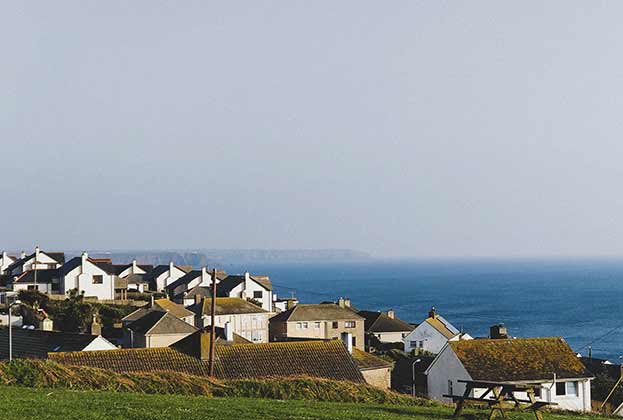Domestic tourism is driving the regional economy
Growth after the pandemic
The South West has enjoyed strong growth since the pandemic across multiple sectors. Changing priorities around housing choices and the increased ability to work from home have boosted the housing market. Annual house price growth in the year to August 2022 has reached 13.7% in Cornwall and 12.8% in Devon, well above the England average of 8.9%, reflecting the strength of lifestyle considerations in the post-lockdown market.
Leisure and Tourism has become vital to the economy of the South West peninsula, and the sector was boosted during the pandemic by international travel restrictions, which prompted people to take more domestic holidays. In Cornwall alone, tourism accounts for around 25% of GVA, and the South West attracts a quarter of all overnight stays in England. The sector is projected to grow by 34% by 2030 according to Oxford Economics, a rate of growth around 10% higher than the next best-performing sectors; Communications, and Science and Technology.
Has the staycation boom continued into 2022?
The return of international travel meant domestic holiday locations have begun competing with international locations once again. However, a growing awareness of domestic staycation destinations and relatively strong demand has continued to support revenue growth for staycation hotels, particularly in the South West.
Coast and country markets significantly outperformed the UK regional average in terms of post-Covid recovery. The Cornwall and Devon region reported occupancy growth over the summer 2021 period compared to 2019, as pandemic-related concerns increased the appeal of less populated destinations.
Revenue per available room (RevPAR) in the Cornwall/Devon region remained above pre-Covid levels over summer 2022, reporting a 16.7% uplift compared to 2019 equivalent levels. However, on a year-on-year basis, RevPAR for the region was down -25.0%, which was largely a result of strong demand over the 2021 summer period, but also surging average daily rates (ADR). VAT rates for the hospitality sector reduced to 5% between March 2020 and September 2021, which may have supported ADR over this period as some of the VAT cut was passed on to the consumer. VAT rates subsequently returned to 12.5% in October 2021, then 20% by April 2022.
Over the summer 2022 period, while ADRs were down year-on-year, they were still 22.2% ahead of 2019 levels for Cornwall/Devon. However, there was some weakening in occupancy, falling -4.5% below 2019 levels. The Cornwall/Devon region did outperform the staycation market average (based on five key selected markets), which reported occupancy declines of -7.0% over the same period.

Short-term challenges
The aforementioned uplift in daily rates versus 2019 levels will have helped to drive margins, allowing operators to recoup some of the revenue lost during the lockdown periods. However, we have now reached a tipping point whereby higher room rates will deter some households from travelling in the face of the cost-of-living squeeze. Meanwhile, reducing ADR could apply significant pressure on profit margins for hotel operators, who are currently faced with exceptionally high utility bills and staffing costs.
As a result, we expect demand in the short term to be constrained whilst inflation remains in double-digit territory and with consumer confidence deteriorating. Real disposable income is forecast to remain in decline until Q3 2023. As a result, we expect RevPAR across UK staycation markets to report weaker performance in the first half of 2023.
However, the outlook remains promising over the longer term. VisitBritain’s October traveller sentiment survey revealed that 58% of respondents are aiming to take more or the same number of domestic trips over the next year, compared to pre-Covid levels. Affordability is likely to remain a key factor to travel in 2023, and staycations are generally seen as a more affordable alternative to overseas travel, particularly in the face of the depreciation of the pound and rising cost of air travel. Meanwhile, in terms of location of choice, the South West remains the most sought-after region according to VisitBritain, with a 19% share of respondents stating it as their destination of choice for their next domestic trip.

Positive prospects for the long term
Since the easing of travel restrictions, the UK’s regional hotel market has experienced robust investor appetite, with buyers ranging from owner-operators through to private equity-backed platforms.
Investment volumes in the South West reached £92.3 million this year-to-date (Q3 2022), across 11 individual deals. This marks the highest yearly volume for the South West since 2019, with Q4 deals remaining, whilst representing the highest volumes by UK region outside of London and the South East. RedCat-owned Coaching Inn Group continued its regional expansion, acquiring both Forest Park Hotel (New Forest) and Moorland Hotel (Dartmoor) in popular national park destinations.
Confidence across the market has been reinforced by cross-border transactions, while the relatively low value of the pound compared to other currencies could support ongoing interest from some international buyers. Singaporean buyers, Fragrance Group, recently completed the £1.5 million acquisition of the Marine Hotel in Torbay, while their £23 million Corbyn Head Hotel in Torquay is scheduled for a summer 2024 opening.
Rising concerns over debt availability and increasingly squeezed profit margins has begun to impact investor sentiment, resulting in a growing divergence between buyer and seller expectations. In turn, we are experiencing a slowdown in UK hotel investment activity.
Nonetheless, there remains a number of cash-buyers and private equity-backed groups seeking individual regional assets, supported partially by the relatively attractive yield profiles available for smaller regional assets. Despite a slowdown in deal activity in the short term, the longer-term demand for regional hotel assets will remain resilient, driven in part by strong underlying visitor demand.
Read the articles within Spotlight: The South West Peninsula below.
.jpg)

